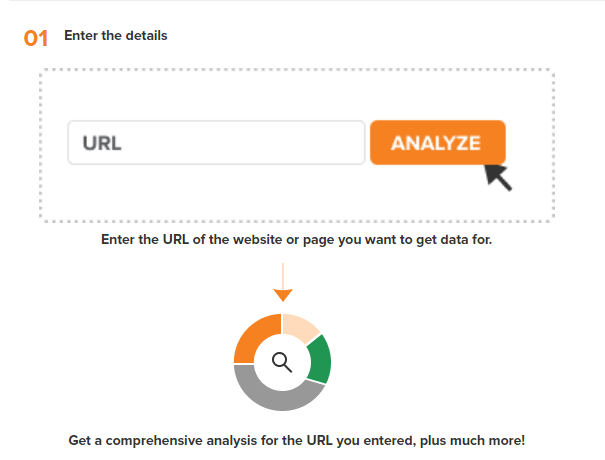With all the advice out there on building quality links, there must be some guidance on link building strategy for SEO. If your website has been around for a few months or longer, it’s likely that you have some good and bad links pointing to it. Maybe you just started your website and have no links pointing to your website, which brings 0 traffic. No one wants that. The starting point to build quality backlinks is to perform a backlink analysis.
What is a Backlink Analysis?
Backlink analysis is the perfect way to get a good understanding of your backlink profile and whether or not you’re on the right track. Once you see all the links taken into consideration, then you can get a better idea of how well your site’s ability to rank well in search engine results. From here you can identify how you can emulate your competitor’s backlink analysis to earn extra backlinks and use the information for building your own backlinks.
How to Do a Backlink Analysis
If you’ve never done a backlink analysis for your website or small business, there are a couple simple steps to get started first.
1) Choose the sites and links you want to analyze
Before you do anything, you’re going to want to know what sites you’re analyzing for Backlink Analysis SEO. This might take some research on your part. You want to know (and likely already know) your main competitors and similar services. If you’re a local business, identify and compare other competitors in your area. If you’re an e-commerce retailer, you’re just one google search away from other sites selling the same products. These other websites should be at the top of your priorities list. Depending on the tool you use, you may be able to get some pretty comprehensive data along with a list of sites competing for the same keywords as you. Thankfully, the LXRMarketplace has a free backlink analysis tool, the SEO Inbound Link Checker that will let you examine your full link profile as well as a backlink audit.
2) Enter the domain or website you want to collect data from

3) Examine the data and consider the page authority of linking sites
Part of backlink analysis involves sifting through a lot of data. The Inbound Link Checker from LXRMarketplace allows you to generate a full summary of referring domains and backlinks with other key metrics by just entering the domain or URL. All of your backlinks data is available for download in excel format.
What Are The Important Factors For Backlink Analysis?
Like many other tools in the LXRMarketplace, the Inbound Link Checker provides you with a wealth of information. It can seem overwhelming at first, but you can make it very easy on yourself if you just know what to look out for:
1) View the number of backlinks for competitors
Within the data, you’ll see the number of backlinks for all competitors within the list. Use this information to gather data on link building opportunities. Comparing this number to your site can give you a general idea of how your site matches up to your competitors in terms of authority. You can identify your competitors from two distinct types: Domain-level and Page-level competitors. Domain-level competitors are sites that are actively competing with you for SERPS on the whole. They may not always be traditionally in your business’s industry, but they may be just competing for similar keywords. Page-level competitors aren’t competitors on the whole but are still competitors with you on a page-level for specific topics or keywords. As you review the sites linking to your competitors, keep in mind that a link from a site with high page authority is much more valuable from a site linking with low page authority. Also, take a look for sites with a large link portfolio so there are even more links you can compare to.
2) Top pages with the most traffic
At this stage, take a deeper dive into the sites linking to your competitors. You can look over popular pages to see what type of content works best for your link building strategy. If you see any particular topics with the most links, it’s probably a safe bet to continue writing about that topic. Evaluate your competitor’s top pages to see the types of content most valuable to their link building strategy. If one of your top competitors has multiple links to a particular blog on their site, you might want to think about writing a blog. You’ll begin to get some general ideas for your link building strategy, but for the sake of links, you’ll have to offer something unique and interesting. Take some inspiration for content, but take a different angle.
3) Check your referring domains
You should identify as many referring domains as possible. This will tell you how many unique sites link to a particular site. Having fewer referring domains than total backlinks is normal, but your goal should be to have a link profile that’s as diverse as possible with a lot of domains. Earning just a few links from different referring domains will boost your ranking more in Google than earning many links from the same domain. The higher number of backlinks, the higher your chance is to soar in the Google rankings.
Conclusion
Doing a competitor backlink analysis is often more informative than your own backlink analysis. Backlink analysis is essential for every SEO strategy and can grant valuable insight into both your site and your competitors’.


